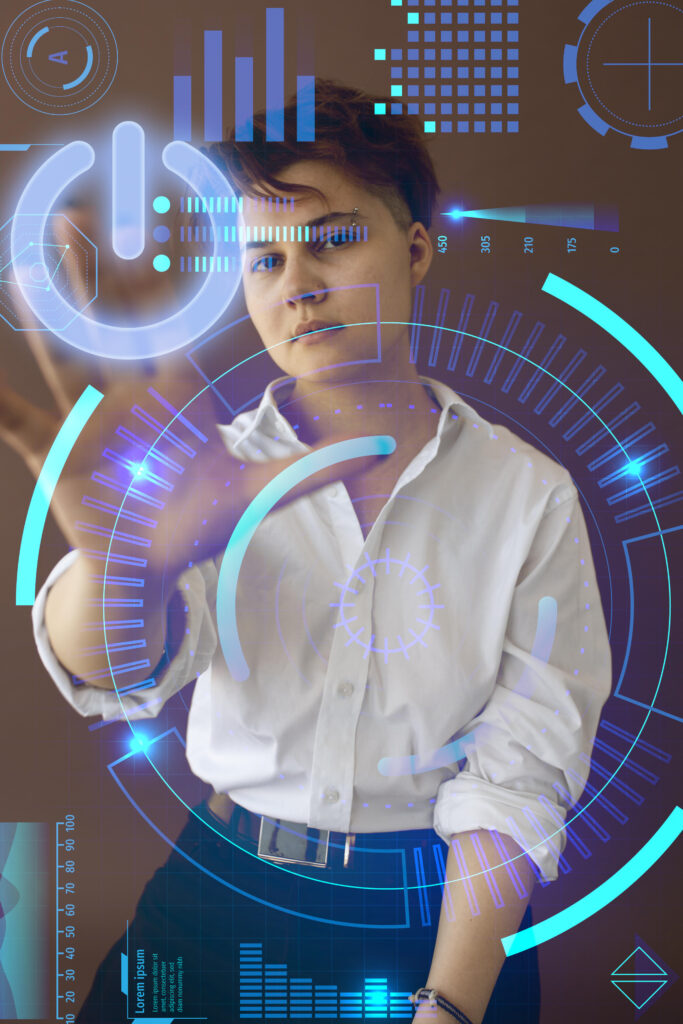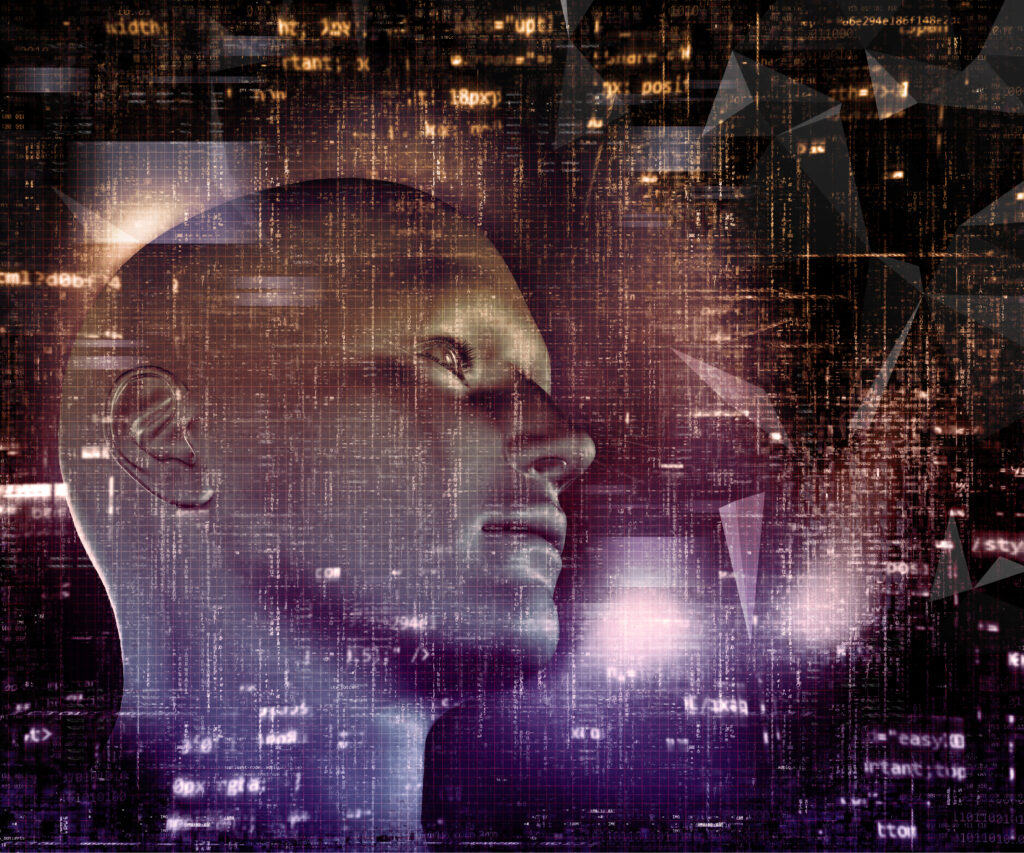“Google’s Innovative In the era of artificial intelligence, the proliferation of counterfeit images and disinformation has reached unprecedented heights. As early as 2019, a comprehensive study by the Pew Research Center unearthed a disconcerting statistic: a staggering 61% of Americans believed it was an unreasonable expectation for the average citizen to discern manipulated videos and images. Remarkably, this revelation transpired before the widespread accessibility of generative AI tools.
Fast forward to August 2023, and Adobe, a pioneering force in the digital realm, shared alarming statistics. In a mere three months since its March 2023 debut, Adobe Firefly had birthed an astounding one billion AI-generated images.
In response to the escalating inundation of AI-forged imagery, Google Deep Mind unveiled a beta iteration of SynthID. This cutting-edge tool orchestrates the watermarking and identification of AI-spawned images. It accomplishes this feat by intricately embedding a digital watermark within the very pixels of an image—a watermark, imperceptible to the human eye yet undeniably discernible for identification.
Kris Bondi, the luminary CEO and founder of Mimoto, a proactive cybersecurity enterprise, articulated a sobering truth. While Google’s SynthID marks a commendable outset, the quagmire of deep fakes defies simplistic resolution.
Google’s Innovative
Bondi astutely remarked, “One must not forget that malevolent entities are active participants in this landscape. Their tactics and technological arsenal perpetually evolve, extending their nefarious reach. The cost associated with their deceptive craft, including the creation of deep fakes, steadily plummets.”
He went on to assert, “The cybersecurity ecosystem necessitates a multifaceted approach to confront the scourge of deep fakes. Collaboration becomes paramount in the development of malleable strategies that can adapt and outmaneuver the malefactors.”
Ulrik Stig Hansen, the visionary co-founder of Encord, a London-based bastion of computer vision training data, echoed Bondi’s sentiments. He expressed certitude that the detection of synthetic data would emerge as a formidable challenge.
“Invariably, history has borne witness to this pattern with nascent technologies,” Hansen mused. “Generative AI, though heralded for its laudable applications such as cost-effective healthcare diagnostics and expedited disaster recovery, is not immune to vulnerabilities. These vulnerabilities beckon opportunists eager to exploit them.”
Hansen continued, “The crux of the matter resides in the pace at which proactive countermeasures can outstrip the machinations of malevolent actors. Regulatory frameworks will invariably shape the contours of this dynamic space. Europe has provided a glimpse into this future, yet the true essence lies in fostering the growth of constructive applications while fortifying protective bulwarks against misuse.”
The concept of digital watermarking, a term ushered into existence by the minds of Andrew Tirkel and Charles Osborne in 1992, emerges as a salient tool to affirm the provenance and authenticity of images. An alternative approach entails scrutinizing an image’s metadata. Alas, this avenue is susceptible to tampering and manipulation, eroding trust in an image’s veracity.
Chief Data Scientist
Dattaraj Rao, the eminent Chief Data Scientist at Persistent Systems boasting 11 patents in computer vision, offered his perspective. He noted that watermarking, historically harnessed to safeguard image copyrights, represents a substantial advancement when applied to AI-generated images.

Rao opined, “The crux of the matter lies in achieving unanimity across enterprises and users concerning a standardized approach. Presently, consensus eludes us, even in the realm of image data storage, where GIF, JPEG, PNG, and others coexist.”
With AI technology evolving at breakneck speed, Rao forewarned that assailants would inevitably decipher and override this watermark. He recalled the analogous predicament encountered with visible watermarks, where contemporary algorithms can seamlessly identify and replace watermarked pixels based on their surroundings.
Rao postulated, “The crux of the issue mandates a comprehensive solution for safeguarding digital content. Techniques like cryptography emerge as viable contenders. At its core, an image comprises an array of pixel color intensities—a malleable canvas for manipulation.”
In contemporary times, websites ascertain their safety via public key encryption facilitated by TLS certificates. These certificates are issued by authorized agencies, thereby instilling trust. Rao drew a parallel, stating, “Likewise, we may require a mechanism to verify digital content. Technologies such as blockchains and digital ledgers harbor the potential to construct a decentralized, immutable registry for digital content. This would furnish a comprehensive lineage for any internet-bound image or Word document. However, enforcing such a system remains a formidable challenge.”
Rao concluded by emphasizing that, regardless of the chosen methodology, the Herculean task ahead entails the establishment of a standard, one that garners global endorsement from a plethora of organizations and nations.
The narrative takes a fascinating turn to July 2023, as the White House convened a pivotal meeting. Seven preeminent AI juggernauts, including titans like Google and OpenAI, pledged their commitment. Their collective mission: to devise tools capable of watermarking and discerning AI-generated text,
In the realm of artificial intelligence’s dominion, the proliferation of spurious imagery and disinformation has assumed staggering proportions.
As early as the year 2019, an exhaustive study conducted by the Pew Research Center brought to light a disconcerting revelation—namely, that an overwhelming 61% of the American populace regarded it as an onerous expectation for the average citizen to discern manipulated videos and images. Notably, this revelation preceded the widespread dissemination of generative AI tools to the general populace.
Fast-forward to the annals of August 2023, and the venerable Adobe, a stalwart in the digital sphere, divulged alarming statistics. In a mere span of three months following its momentous March 2023 launch, Adobe Firefly birthed an astonishing one billion AI-crafted images.
In response to the escalating inundation of AI-forged visual content, Google Deep Mind unveiled a beta iteration of SynthID. This cutting-edge tool orchestrates the watermarking and identification of AI-forged visuals. It accomplishes this feat by intricately embedding a digital watermark within the very pixels of an image—a watermark, imperceptible to the human ocular apparatus yet conspicuously discernible for purposes of identification.
Kris Bondi, the luminary CEO and founder of Mimoto, a proactive cybersecurity enterprise, articulated a sobering truth. While Google’s SynthID marks a commendable outset, the quagmire of deep fakes defies simplistic resolution.
Bondi astutely remarked, “One must not forget that malevolent entities are active participants in this landscape. Their tactics and technological arsenal perpetually evolve, extending their nefarious reach. The cost associated with their deceptive craft, including the creation of deep fakes, steadily plummets.”
He went on to assert, “The cybersecurity ecosystem necessitates a multifaceted approach to confront the scourge of deep fakes. Collaboration becomes paramount in the development of malleable strategies that can adapt and outmaneuver the malefactors.”
Ulrik Stig Hansen, the visionary co-founder of Encord, a London-based bastion of computer vision training data, echoed Bondi’s sentiments. He expressed certitude that the detection of synthetic data would emerge as a formidable challenge.

“Invariably, history has borne witness to this pattern with nascent technologies,” Hansen mused. “Generative AI, though heralded for its laudable applications such as cost-effective healthcare diagnostics and expedited disaster recovery, is not immune to vulnerabilities. These vulnerabilities beckon opportunists eager to exploit them.”
Hansen continued, “The crux of the matter resides in the pace at which proactive countermeasures can outstrip the machinations of malevolent actors. Regulatory frameworks will invariably shape the contours of this dynamic space. Europe has provided a glimpse into this future, yet the true essence lies in fostering the growth of constructive applications while fortifying protective bulwarks against misuse.”
The concept of digital watermarking, a term ushered into existence by the minds of Andrew Tirkel and Charles Osborne in 1992, emerges as a salient tool to affirm the provenance and authenticity of images. An alternative approach entails scrutinizing an image’s metadata. Alas, this avenue is susceptible to tampering and manipulation, eroding trust in an image’s veracity.
Dattaraj Rao, the eminent Chief Data Scientist at Persistent Systems boasting 11 patents in computer vision, offered his perspective. He noted that watermarking, historically harnessed to safeguard image copyrights, represents a substantial advancement when applied to AI-generated images.
Rao opined, “The crux of the matter lies in achieving unanimity across enterprises and users concerning a standardized approach. Presently, consensus eludes us, even in the realm of image data storage, where GIF, JPEG, PNG, and others coexist.”
With AI technology evolving at breakneck speed, Rao forewarned that assailants would inevitably decipher and override this watermark. He recalled the analogous predicament encountered with visible watermarks, where contemporary algorithms can seamlessly identify and replace watermarked pixels based on their surroundings.
Rao postulated, “The crux of the issue mandates a comprehensive solution for safeguarding digital content. Techniques like cryptography emerge as viable contenders. At its core, an image comprises an array of pixel color intensities—a malleable canvas for manipulation.”
In contemporary times, websites ascertain their safety via public key encryption facilitated by TLS certificates. These certificates are issued by authorized agencies, thereby instilling trust. Rao drew a parallel, stating, “Likewise, we may require a mechanism to verify digital content. Technologies such as blockchains and digital ledgers harbor the potential to construct a decentralized, immutable registry for digital content. This would furnish a comprehensive lineage for any internet-bound image or Word document. However, enforcing such a system remains a formidable challenge
